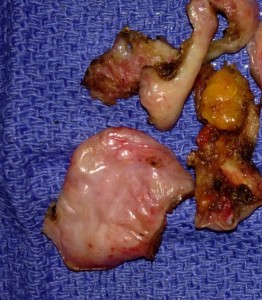Breast Capsules
Posted On: July 11, 2013 Author: The Office of Dr. Stuart Linder Posted In: Home

Breast Capsules
One of the most common reasons that patients present for secondary surgery after breast implants is capsular contracture. Capsular contracture is associated with a hardening around the implant, saline or silicone that can be painful. The classifications include Baker I, soft supple breast; Baker II, palpable; Baker III, palpable and visible capsule; and Baker IV, palpable, visible, hard, distorted and painful. Patients who present with severe encapsulation have often thick capsules that are formed around the implants. The etiology of capsular contracture is not completely understood or ascertained at this time. It may be associated with a possible micro infection or staphylococcus aureus or epidermis. In any case, the capsule that forms around an implant is normal. All prosthetic devices in the body will have a capsule form around it over four to six weeks. The components of the capsule include: collagen, myofibroblast and blood vessels. The white shear appearance of the capsule as seen in the photograph is associated with a collagen formation. Capsules normally appear shiny and white in appearance; however, they can become thick, hard and darker in appearance, especially with calcifications of granulomas associated with silicone rupture. This is a photograph of capsule removed from the patient recently. She had a severe Baker IV capsular with painful breasts, hardening and distortion. The capsule is quite thick. It interdigitates with the undersurface of the pectoralis major muscle in this case. A small portion of the capsule taken usually cannot be completely removed without taking a small portion of breast tissue. This is why with recurrent capsular contractures and capsulectomies we have to be careful not to over-exenterate too much scar tissue.
Capsular contracture and ruptured implants are the two most common causes for patients presenting to my Beverly Hills practice for breast revision surgery.